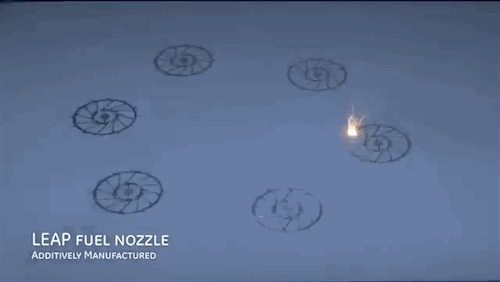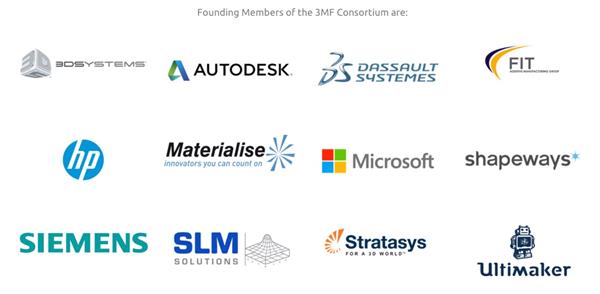Last year, Microsoft launched the 3MF Consortium, a powerful cadre of businesses seeking to create a 3D file format with the potential to be universally used across both 3D printing platforms and 3D software. No easy task, the .3MF file format is meant to address such issues as containing huge amounts of data for CAD design, while also 3D printable on a huge array of technologies. With GE Global Research joining the consortium as a Founding member today, however, the task may become easier.
With a market cap of $285 billion, GE is easily the largest multinational to embrace 3D printing as a means of manufacturing end parts. The conglomerate was the first to open a mass production 3D printing facility, located in Auburn, Alabama, where it is producing nozzles for the LEAP jet engine. GE also boasts a cutting edge team of scientists and engineers at its Additive Manufacturing Lab, where they have developed new methods of 3D printing metals and ceramics. And, the corporation suggests, GE is the world’s largest user of metal 3D printing.
As a pioneer in 3D printing, it should be no surprise that GE has joined the 3MF Consortium, already populated by such powerful players as Dassault Systèmes, Autodesk, Siemens, HP, and Microsoft, as well as important 3D printing companies like Shapeways, Stratasys, 3D Systems, Materialise, SLM Solutions, and Ultimaker. Adrian Lannin, 3MF Consortium executive director, acknowledges the importance of GE Global Research becoming a founding member of the organization by saying, “GE Global Research is a recognized leader with real-world experience using 3D printing and additive manufacturing to drive innovation. We look forward to working with GE Global Research to enrich the 3MF standard and create new opportunities for both 3D printing and the additive manufacturing ecosystem.”
Prabhjot Singh, Manager of the Additive Manufacturing Lab at GE Global Research, contributes, “With the successful integration of 3D printed metal parts in two different jet engine platforms and the construction of GE Aviation’s $50 million state-of-the-art high-volume additive production plant in Auburn, Alabama, we achieved major milestones with our additive program in 2015. But we have only scratched the surface on additive’s potential. With even better design tools, machines and new materials, we can dramatically expand the additive industry’s footprint in manufacturing. That future will arrive faster through the strong ecosystem that 3MF is building to bring the right stakeholders together to accelerate new innovations and breakthroughs in this space.”
While the current version of the .3MF file format available for free online, some of our readers worry that, if widely adopted, .3MF would give Microsoft the same control over 3D printing as it has over word processing files. PrintToPeer‘s Tom Bilecki shared in our comments section the Wikipedia page on “Embrace, extend, and extinguish”. This phrase was used internally by Microsoft to represent a strategy to give them a monopoly over computer products. They begin by introducing creating a software that embraced universally implemented public standards. This would be followed by the extension of capabilities in that product, creating interoperability issues for those who implemented the original standard. Then, when Microsoft’s version of the standard, with extended capabilities, became the new, de facto standard, the competition would be marginalized for not embracing Microsoft’s extended capabilities.
Microsoft’s EEE strategy was an important part of the famous United States v. Microsoft antitrust suit that was eventually settled by the Department of Justice. In that trial, the plaintiffs argued that Microsoft implemented EEE by adding support for ActiveX controls in Internet Explore to overtake Java and Netscape Navigator. It’s possible that we’ll see a similar strategy adopted by Microsoft with the .3MF file format, in which the Consortium attempts to make this the de facto file format. The partners in the Consortium, including the two largest CAD software companies, will benefit as being initial adopters of this format, while smaller and independent businesses will have to eventually adopt it to ensure interoperability with programs from Autodesk and Dassault Systèmes. This is not so surprising for some of the world’s biggest tech players, but it does surprise me that an open source proponent like Ultimaker has joined Microsoft’s cadre.




Leave A Comment